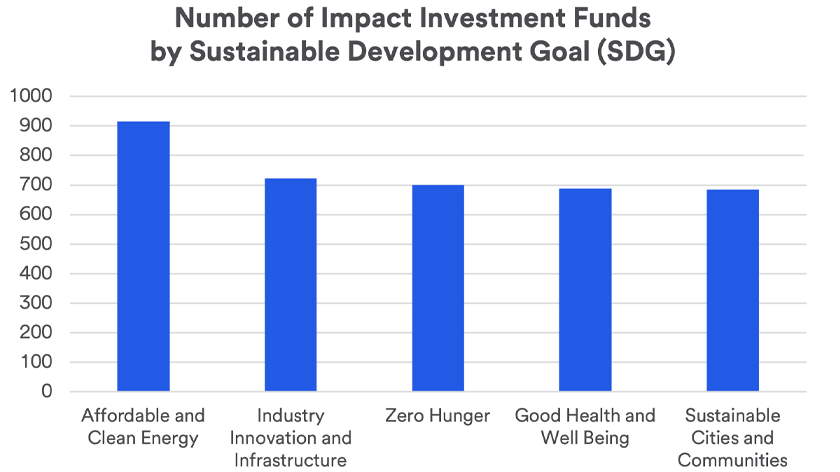“In the real world, the definition of ‘impact investing’ is very much unique to each person,” says Burlingame. “Once you’ve identified what values you want to be aligned with your money, we can identify the most effective ways to incorporate impact investing into your portfolio strategy.”
As ESG investing evolves and undergoes greater scrutiny, some investors have chosen recently to pull back from this investment approach. Following very strong flows of money into the ESG market from 2019 to 2021, $13 billion of outflows in 2023 marked the first time in more than a decade that capital flows to U.S.-based ESG funds were negative. However, it should be noted that some exchange-traded funds (ETFs) garnered substantial net inflows in 2023, including two climate-focused funds.3
Impact investing, ESG investing and socially responsible investing (SRI)
Impact investing includes environmental, social and governance (ESG) considerations. ESG investing looks at three dimensions of a company:
- Environmental – broad areas of impact related to climate change, energy efficiency, pollution, water scarcity and biodiversity.
- Social – factors that impact the work environment and community such as human rights, gender and racial diversity, educational opportunities, labor standards and employee engagement.
- Governance – factors that impact company performance such as the diverse makeup of corporate boards, levels of executive compensation, auditing practices, lobbying activities and political contributions.
Impact investing also seeks to support the efforts of businesses and organizations to complete projects aimed at having a positive benefit on society. A precursor to ESG and impact investing was socially responsible investing (SRI). This approach primarily focused on eliminating certain investments that did not match the investor’s ethical guidelines. A common example would be the avoidance of investing in stocks of tobacco companies.
Generating a financial return with impact investing
When determining your own objectives for impact investing, it may be helpful to choose your approach. There are generally two options:
- “Concessionary” investing – the primary focus is that the investment makes a significant impact, with a secondary emphasis on generating a positive return. This tends to lean toward a philanthropic intent, with investment results considered a lower priority.
- “Non-concessionary” investing – while seeking to still have a positive impact, greater emphasis is placed on assuring that attractive financial returns are generated. The investor proceeds with a belief that profitable opportunities can be found by investing with specific purposes in mind.
The lack of performance history makes it difficult to definitively state that a focus on impact outperforms other investment styles. Yet according to a survey by the Global Impact Investing Network, 79% of respondents reported that their financial expectations were met or exceeded. More than two-thirds of them indicated their expectation was to earn risk-adjusted, market-rate returns. In addition, 88% said their investments met or exceeded impact targets.4
The challenges of screening for impact investing opportunities
While the number of available options claiming to meet the definition of impact investing has ballooned, to accomplish your specific objectives, a thorough assessment is required to clearly identify the fund’s intentions as it relates to ESG. Most important is to sort through false promises and misleading claims, a concept broadly referred to as “greenwashing.” This term describes instances when a company executive or investment manager conveys a false impression or provides misleading information about the merits of impact in its products or services.
“Funds must have a proven intention and ability to deliver on their impact investing objectives over an extended period of time,” says Burlingame. “Measuring the ‘non-financial’ benefits of an investment (its success in making an impact) can be more complex than measuring the financial return of an investment. Some aspects of ESG performance are easier to measure than others.”
For example, environmental measures, such as the carbon output created by a company, have become more readily available in recent years. However, substantive information about gender diversity in a company’s workforce or other social governance metrics are less publicly accessible. In addition, impact ratings from the investment research firm Morningstar only date back to 2016. The lack of consistency in ratings along with the relative newness of many firms in the business makes the investment selection process more challenging.
This further highlights the value of professional guidance in your investment selection. Burlingame notes, “The process for identifying the right impact investments requires the right combination of qualitative and quantitative analysis. As the industry evolves, new investment alternatives arise and the need for careful assessment becomes even more pronounced.”
Building and managing wealth with positive outcomes
The ultimate objective of impact investing is for you to feel comfortable that the money you’re investing is designed to “do good” over the long run. Achieving investment goals does not need to be separate from mitigating risks or seeking to solve today’s environmental, social or governance challenges. Your values can be meaningfully incorporated into your investment strategy.
Learn how we approach impact investing.




